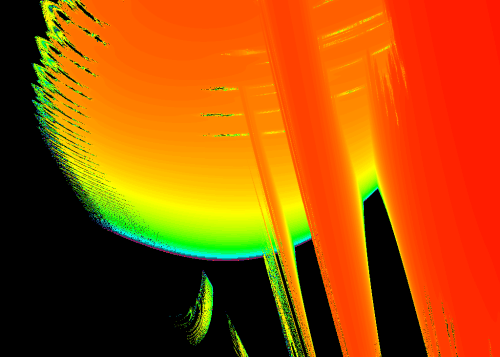Relative Langlands Duality, joint with Yiannis Sakellaridis and Akshay Venkatesh
Some talks about this project are available here: Western Hemisphere Colloquium on Geometry and Physics (slides available here), Harvard CMSA colloquium, and MSRI.See also links to notes and videos at MathOverflow
I am interested in the interface between representation theory, algebraic geometry and mathematical physics. More specifically, my research program is concerned with the interactions of geometric representation theory (in particular the geometric Langlands program) with powerful new tools from homotopical algebra (derived algebraic geometry) and organizing structures from physics (topological field theory and supersymmetric gauge theory). The main theme in my recent work is the interaction of representation theory and gauge theory. Representation theory seeks to classify and describe the possible realizations of symmetries, and to exploit symmetry by providing a tool to decompose symmetric structures into elementary constituents. Rep- resentation theory has been an essential tool in quantum physics almost from its inception, providing for example the structure of atomic orbitals. Gauge theories, quantum field theories built directly out of the structure of local symmetry, are the language of much of high energy physics, in partic- ular the standard model. Gauge theory in turn has had a tremendous impact on low dimensional topology and geometry. Recently the relationship between representation theory and gauge theory has been reversed. In a development tracing back to the work of Segal and reaching its modern state after the work of Kapustin-Witten and Lurie, the structure of gauge theory has emerged as a powerful organizing framework for representation theory in the abstract. In this paradigm the different kinds of repre- sentation theories correspond to the different kinds of gauge theories, while the correlation functions, observables and defects in gauge theory provide a radically new and uniform structure through which to understand the most sophisticated concerns of representation theorists. Kapustin and Witten demonstrated that the Geometric Langlands Program appears naturally from the study of electric-magnetic duality in supersymmetric gauge theory. More broadly, one can use electric-magnetic duality as a powerful paradigm for the entire Langlands program, with interesting consequences for number theory.
I completed my Ph.D. under the supervision of Edward Frenkel; check out our book Vertex Algebras and Algebraic Curves.
I've had longstanding collaborations with Tom Nevins, David Nadler, Andy Neitzke, Sam Gunningham and David Jordan. I'm currently engaged in three large-scale collaborations: with Yiannis Sakellaridis and Akshay Venkatesh; with Harrison Chen, David Helm and David Nadler; and with Sam Gunningham, David Jordan and Pavel Safronov. My other collaborators include Indranil Biswas, Matt Szczesny (my academic brother), Reimundo Heluani, John Francis, Anatoly Preygel, Adrien Brochier, Chris Beem, Tudor Dimofte and Mat Bullimore.
My current graduate students are
- Saad Slaoui
- Jackson Van Dyke
- Alberto San Miguel Malaney
- JiWoong Park
- Rok Gregoric (PhD 2023, Frank Gerth III Dissertation Award)
- Kendric Schefers (PhD 2023, Frank Gerth III Dissertation Award)
- Rustam Antia (PhD 2019)
- Vaibhav Murali (PhD 2019)
- Isabelle Scott (MA 2019)
- Richard Derryberry (PhD 2018)
- Lee Cohn (PhD 2016)
- Iordan Ganev (PhD 2016)
- Hendrik Orem (PhD 2015)
- Pavel Safronov (PhD 2014, Frank Gerth III Dissertation Award)
- Parker Lowrey (PhD 2010)
- Carl Mautner (PhD 2010, Frank Gerth III Dissertation Award)
Links to some of my lectures:
My slides and video from plenary talk ``Representation Theory as Gauge Theory" at the 2016 Clay Research Conference.
ASPECTS of Topology - conference in honor of Graeme Segal's 70th birthday
Categorical Representation Theory: a graduate workshop I lead in Eugene, sponsored by Nick Proudfoot's CAREER grant.Slides for lecture at Luminy, July 2012
GRASP Lectures Available!

- GRASP (Geometry, Representations, And Some Physics)
-- an electronic source
for expository streaming--video lectures, notes, and references for
beginning graduate students (funded by an NSF CAREER grant).
[Not to be confused with Greece Residents Assisting Stray Pets and
other GRASP pages]
- My
Geometric Langlands page
contains various links to introductory lectures, survey
papers, notes and other references
for the geometric Langlands program and related areas.
- GRASP notes page,
containing an old collection of lecture notes, including many on geometric Langlands topics.
- [Last updated 2007!]: Publications and
Preprints and
Annotated Bibliography (see also the
arXiv search for my papers.)
- My outdated Math Page contains some informal essays and links.
I miss the nuance of the old topos.

Sunrise on Io by David Ben-Zvi and Paul Burchard. Copyright 1993 by The Geometry Center, University of Minnesota. Used with permission.
More cool fractal pictures I helped make at the Geometry Center
Our Himalayan Adventure, David and friends in Himachal and Ladakh 2003
Click here for some old pictures.
I am an avid movie fan. Check out some lists of movies I've seen. [NB: hasn't been updated since..2003??]
Some quotes collected from my U.of Chicago Honors Calculus class.
Image from Outside In:
![[Transparent Peach Eversion]](pix/peach-alpha.gif)
[Copyright © Summer 1992 by The Geometry Center, Univerity of Minnesota. All rights reserved - see more info]
Department of Mathematics University of Texas, Austin Office 10.168 (512)471-8151 benzvi@math.utexas.edu
Up: University of Texas, Austin Mathematics Department
